The 2016-17 season is here, and in anticipation of the best winter of your life, you’ve decided to buy a new pair of skis. You browse the internet or walk into your local ski shop and realize that you’re overwhelmed by the multitude of options facing you. You wearily admire topsheets while secretly wondering, “what the hell is the difference between a freeride and a freestyle ski? Do I want a poplar or beech core? Does any of this even matter?” Well, it does. And we’re here to help explain it all. Below, you’ll find everything you need to know before investing in your next pair of skis, broken down into two simple parts.
Part one: Find your perfect kind of ski
The 105 skis featured in our Buyer’s Guide all earned the coveted badge of Editors’ Pick. That is to say, we’ve designated these planks as the best on the market for the 2016-17 ski season. The models we’ve highlighted are divvied up by waist width and intended purpose, resulting in eight groupings: 90-99 mm freeride; 90-99 mm freestyle; 100-114 mm freeride; 100-114 mm freestyle; 115-plus mm freeride; 115-plus mm freestyle; park; and women’s. One-hundred-and-five skis is a veritable buttload, and we don’t want to overwhelm you, so we’ve provided this handy guide to help you in your crusade to find the “glass slipper” that matches your particular skiing needs—your Cinderella ski.
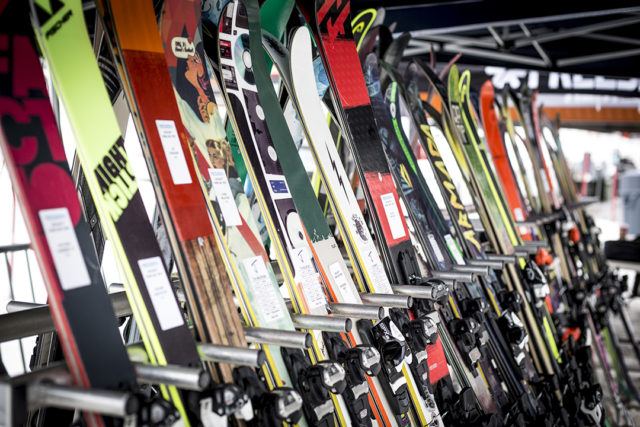
90-99 mm freeride skis
It’s all about speed and stability. If your skiing style were compared to a musical group, you’d likely be Metallica or Slayer. The act of laying your skis on edge makes you all tingly inside, and the thought of a meticulously groomed, steep run “pitches your tent.” Imagining a fast-paced zipper line will have the same effect. You generally prefer a directional ski that’ll take your trench digging to new levels, because, for you, carving isn’t just a thing, it’s everything.
See the top 90-99 mm freeride skis, here.
90-99 mm freestyle skis
When you give your local mountain a solid up-and-down look from the chairlift you see an infinite playground at your disposal. You identify every natural feature in sight—wind lips, tree bonks, mogul fields, cat tracks, cliffs—and ponder how you might perform tricks onto, off of or over each of ’em. You actively seek rollers to tail press, butter or hand drag across, and you’re no stranger to the terrain park, either. You prefer skis with a softer flex and a solid mix of rocker and camber, allowing you to smear up a storm one minute and lock ’er down for high speed carving the next.
See the top 90-99 mm freestyle skis, here.
100-114 mm freeride skis
You’re at home in the no-fall zone. You rely on skis that are plenty stiff and stable to get you safely down those butterfly-inducing lines you love so much. Sometimes you’ll find yourself on the hardpack but usually just in order to get back to the lift that’ll return you to the delectable soft stuff. When you’re not hucking cliffs or billy-goating rock bands, you’re arcing massive turns down steep bowls, a smile plastered on your face the entire way.
See the top 100-114 mm freeride skis, here.
100-114 mm freestyle skis
You enjoy taking those nifty maneuvers you learned in the terrain park and trying ’em out in a more natural setting—preferably with soft snow conditions abounding. Maybe you’re airing out of a natural quarterpipe and capping a perfect tail grab at your apex, or perhaps you’re sending a lofty cork 720 off of a natural takeoff. Either way, your game is all about style and flair. You crave a forgiving flex and ample tip and tail rocker in your skis for pivoty-good times, but you also seek a touch of camber underfoot so you can go full throttle when your pals call for a “Chinese downhill” when the lifts close. You’ll more than likely record the mind-boggling race, tricks and all, and upload your own version of One of Those Days to YouTube.
See the top 100-114 mm freestyle skis, here.
115+ mm freeride skis
Somewhere near the top of your bucket list is “Move to Alaska.” There, you’d live out your days sliding down spine walls, dropping 40-footers and straight-lining run-outs. Deep, steep skiing is your only worthwhile venture. Thankfully, in your dreams, you live in a place that experiences abundant powder days and is a mecca of big-mountain shredding. You seek a stiffer flex with plenty of camber, ideal for holding fast when a grisly fate awaits you on either side of your line.
See the top 115+ mm freeride skis, here.
115+ mm freestyle skis
Pillows, pillows and more pillows, that’s pretty much all you care about. That and which tricks will serve as the perfect exclamation points on your descents down those marshmallow-laden powder fields. More often than not, you’ll go with a smooth 180 or 540, riding away backwards and brushing off your shoulder, because even Chris Benchetler would have been proud of that performance. The girthy waist width and forgiving flex of your skis allows you to surf the deepest of snow, ready to pop, press and pivot on a dime at any time.
See the top 115+ mm freestyle skis, here.
Women’s skis
The “pink it and shrink it” approach is a thing of the past. Ski manufacturers regularly tailor the construction of their female-specific models to suit the needs of those with dual X chromosomes. Whether it’s utilizing lighter wood and composites in the core, strategically placing those materials to accommodate female anatomy or cutting down on heavier materials, today’s top brands are going the extra mile to help women get the most bang for their buck, energy expenditure-wise. The planks you’ll find on these pages will give many ladies the confidence to follow in the footsteps of skiers like Monod, Dyer, Backstrom, Bowman, Raymond, Voisin, Parker and Collinson.
See the top women’s skis, here.
Park skis
It’s 10:00 a.m. on a Saturday and it snowed 12 inches overnight. The lift line to the peak is teeming with hungry powder hounds, but you’re not among them. You’ve made your way straight to the terrain park where you’re assisting the ski area staff in their mission to clear the snow away from the takeoffs and landings of each jump and jib in the lineup. A short while later, you’re spinning, bonking, pressing, flipping and greasing to your heart’s delight. We see you, park rats, and we have what you need: the best jib sticks of the year, ranked and reviewed.
Part two: Understand what’s in your sticks
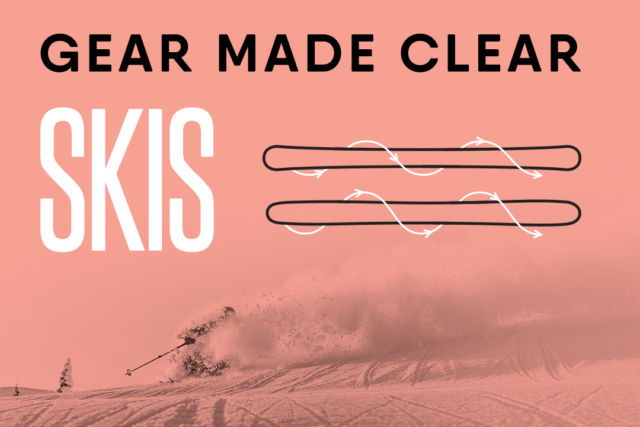
The evolution of ski manufacturing over the past decade—with ever-changing shapes, sizes and materials—has been utterly overwhelming. At the end of the day, though, similar construction principles apply to each pair of planks on the market, regardless of the manufacturer. Sure, you’ll encounter snazzy, colorful and sometimes downright vague marketing buzzwords on your hunt for new skis, and that’s about as fun as tomahawking down a steep ice field. Never fear, FREESKIER is here to help.
To ensure you’re well-versed in ski tech, we’ve put together this nifty guide. You’ll find breakdowns of the terminology, materials and construction techniques associated with the skis you covet so dearly. Remember, someone out there has made a life for themselves tweaking, prototyping, testing and repeating in order to produce skis that suit your needs. School yourself with this information and further validate the efforts of ski manufacturers everywhere.
Ski construction
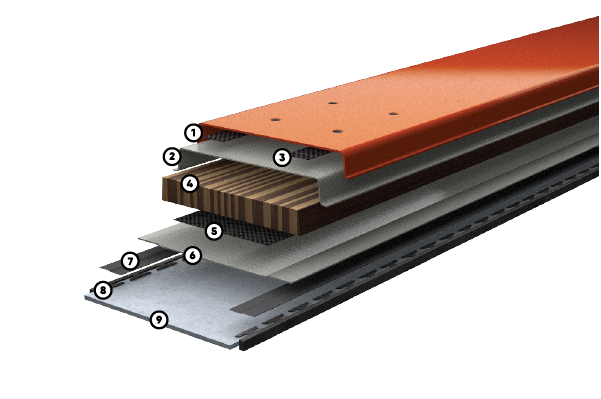
1. Plastics
2. Fiberglass
3. Carbon
4. Core material
5. Metals
6. Fiberglass
7. Rubber
8. Steel edges
9. Base material
Sidewall construction
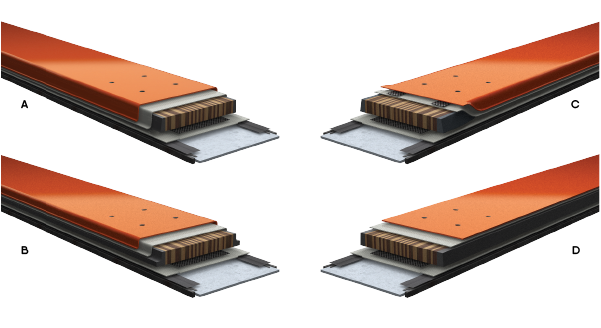
Cap (A)
Cap construction entails the topsheet folding down over the edges of the ski to protect the core materials. It’s an economic build and provides easy turn initiation. The rounded top corner helps deflect sharp objects, yielding a more durable ski. Cap construction generally provides weight savings due to a lack of heavy sidewall materials running the length of the ski.
Halfcap (B)
This crossbreed features cap construction on top, to decrease the weight of the ski, with sandwich on the bottom for a boost in power transmission.
Hybrid (C)
Another fusion of construction techniques, the hybrid employs cap construction in the tip and tail of a ski, lowering swing weight while upping durability in the extremities. Sandwich construction underfoot provides that sought-after power transmission for diggin’ them trenches.
Sandwich (D)
Like your go-to sandwich (the classic Reuben, perhaps?), this construction layers core materials—such as wood, fiberglass, carbon fiber or Titanal—between a topsheet, base and plastic sidewalls. Acrylonitrile butadiene styrene, or ABS, sidewalls offer medium strength in an affordable package, while P-Tex is very durable and resistant to impact, but pricier. The biggest advantage of sandwich construction is its unrivaled power transmission to the edge of the ski. Aggressive skiers, we see you.
Turn radius
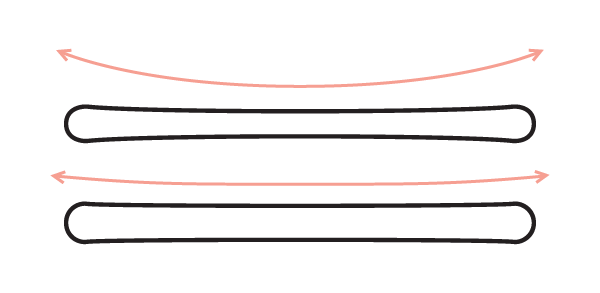
School’s in session, kids, and the subject is geometry. The distance between the center and perimeter of a circle is the radius, and it applies to ski construction. In theory, if you were to ski a perfect circle around a center point using a handful of different ski models, you’d get several circles of varying sizes. A ski’s sidecut and stiffness establish the size of its circle. Stiffer materials combined with less sidecut yield a larger turn radius, or a larger circle; softer materials and deeper sidecut create the opposite.
Skis with a lower turn radius (top), in the 16-meter and below range, carve quick, snappy turns. Those in the 17- to 22-meter spectrum are geared towards maneuvering over varying terrain across all parts of the mountain and terrain park. On the higher end, a radius of 22 meters and above (bottom) is best suited to arcing huge turns down steep faces—think Todd Ligare or Tatum Monod ripping up Alaska.
Sidecut
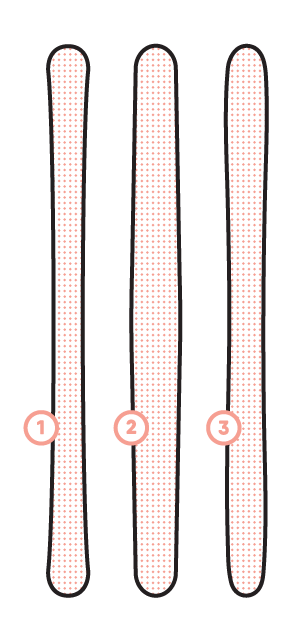
The curvature of a ski’s edge from tip to tail is its sidecut. This measure directly affects how the ski will turn. Those who thirst for quick, sharp turns would do well with a deeper curve. Those who enjoy long, drawn-out turns down the mountain might fancy a shallow sidecut. Some skis feature mid-range sidecuts for a hybrid feel.
Traditional (1)
Traditional sidecut boosts edge contact with the snow, ideal for those looking to carve deep into the hardpack.
Reverse (2)
Reverse sidecut excels in deep snow. Less edge contact with the snow means the ski can float and pivot like a dream through powder.
Multidimensional (3)
A combination of traditional sidecut underfoot with tapered tips and tails yields strong carving capabilities and top-notch maneuverability.
Core construction

If you want to know how a ski will behave on snow, you have to look at the materials found within its core. The essential ingredient in any ski—the macaroni to the cheese, the dough to the pizza, the bun to the burger—is wood; each type makes for vastly different performance on the hill. On one end of the spectrum, woods like paulownia are incredibly lightweight but don’t dampen vibrations very well. In the middle, types like bamboo, aspen and poplar do a great job of balancing weight, dampening and spring, which you’ll need to get maximum air. Fir, ash, maple and beech are dense and thick, ensuring torsional rigidity, stability and power, but they also require more effort to maneuver.
Wood alone doesn’t always set the tone. Manufacturers frequently bond various materials to the wood core in order to fine-tune performance. For example: Titanal, an aluminum alloy, helps dampen vibrations and beef up rigidity. Fiberglass, a more affordable option, brings about more or less the same end. The strength of fiberglass correlates with the way it’s weaved. Biaxial and triaxial are most common and denote that the fiberglass is running in two or three directions, respectively. More fibers equals more torsional rigidity.
Thanks to its impressive strength-to-weight ratio, carbon is often built into the core package to boost stability without bogging the ski down. Carbon has a high price tag, however, and so to keep it economical, it’s often implemented in the form of thin strips, called stringers.
There are even some skis out there that take out-of-the-box thinking to a new level—Eric Pollard and Line’s Pescado, for example—which utilizes a swallowtail construction to help the ski float and hold an edge in the deepest snow.
Torsional rigidity
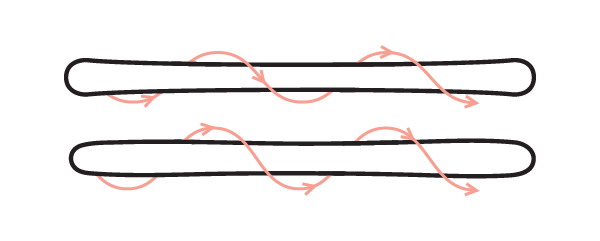
The amount of resistance a ski has to twisting is its torsional rigidity. A ski that boasts adequate rigidity will hang strong during full-steam, forceful carving down the mountain, ensuring edge hold throughout your turns.
Taper

The reduction of width in the tip, tail or both ends of a ski is referred to as taper. Because rockered skis generally have a shortened effective edge length, they’re often built with tapered extremities. Having a shorter edge negates the need to have the widest point of the ski be in the very tip or tail. Tapering helps avoid hooking in deep snow.
Rocker and camber profiles
Regular camber

A ski with traditional, a.k.a. regular, camber has a slight upward curve in the shape of the ski. Thus, the ski makes full edge contact with the snow when a turn is initiated by a skier’s weight. The result is mind-boggling power transmission into, throughout and out of a turn. A traditionally cambered ski helps you to do your best Ted Ligety impression across the entire mountain.
Reverse camber

Reverse camber, a.k.a. rocker or early rise, is the opposite of traditional camber. Reverse camber construction yields far less edge contact with the snow. The operator is thereby easily able to pivot, smear and surf the mountain. Early rise, whether pronounced or gradual, in the tips of your skis aids in turn initiation and flotation in the deep stuff, too. Tanner Rainville—you know, the guy with one of the prettiest nose butters in the game?—relies on the fully rockered Völkl Two for his maneuvers.
Hybrid

The hybrid profile is perhaps the most common on the freeski market these days. It generally entails early rise in the tip and/or tail with traditional camber underfoot. The hybrid profile allows skiers to experience the playful, maneuverable, floaty nature of rocker with the amazing edge control and power of camber—all at once. It’s a win-win situation. For example, Candide Thovex, while superhuman, wouldn’t be able to combine breakneck speed with incredible trickery sans the aid of his Candide 3.0 skis, which feature a rocker-camber-rocker profile.
More Gear Made Clear: Boots | Bindings | Outerwear | Goggles | Helmets
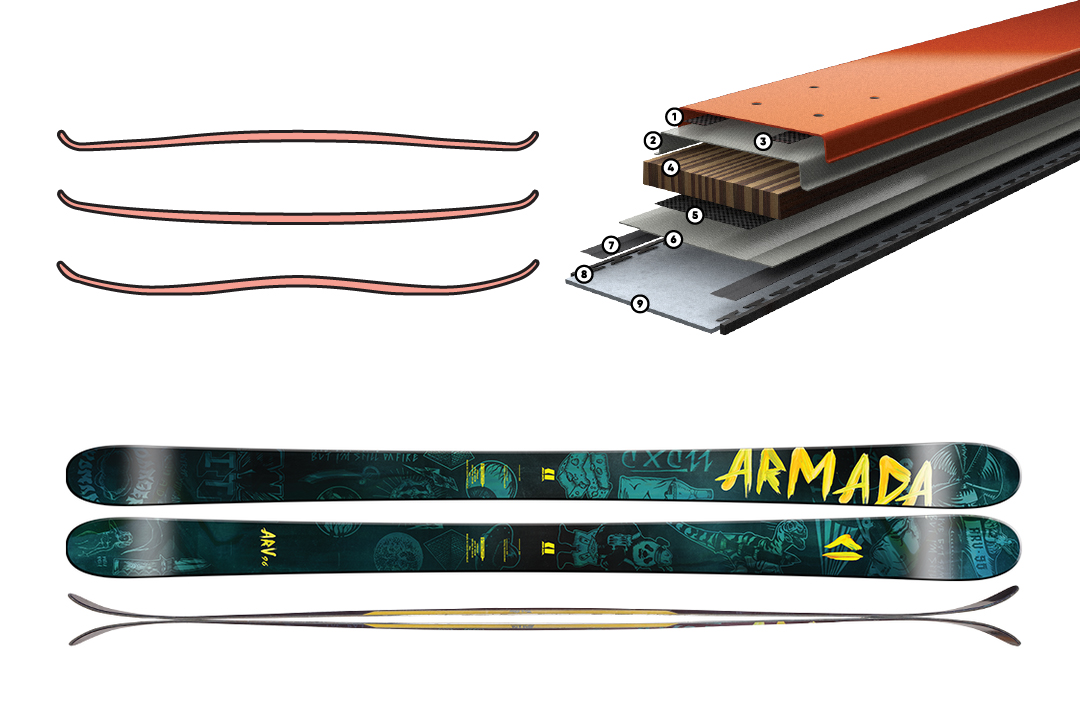
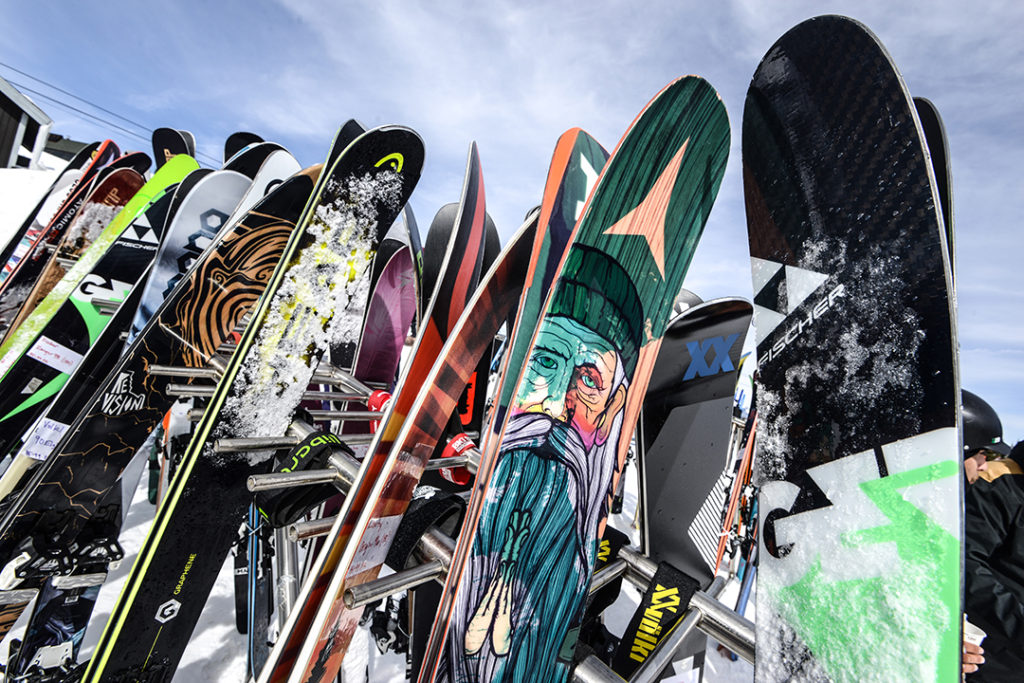
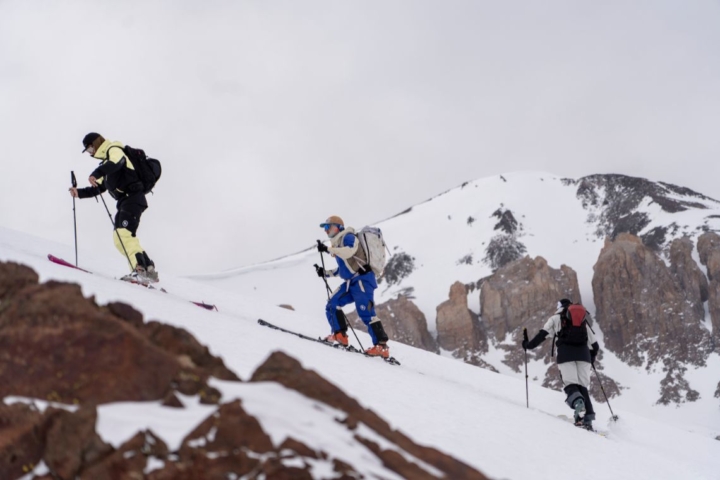
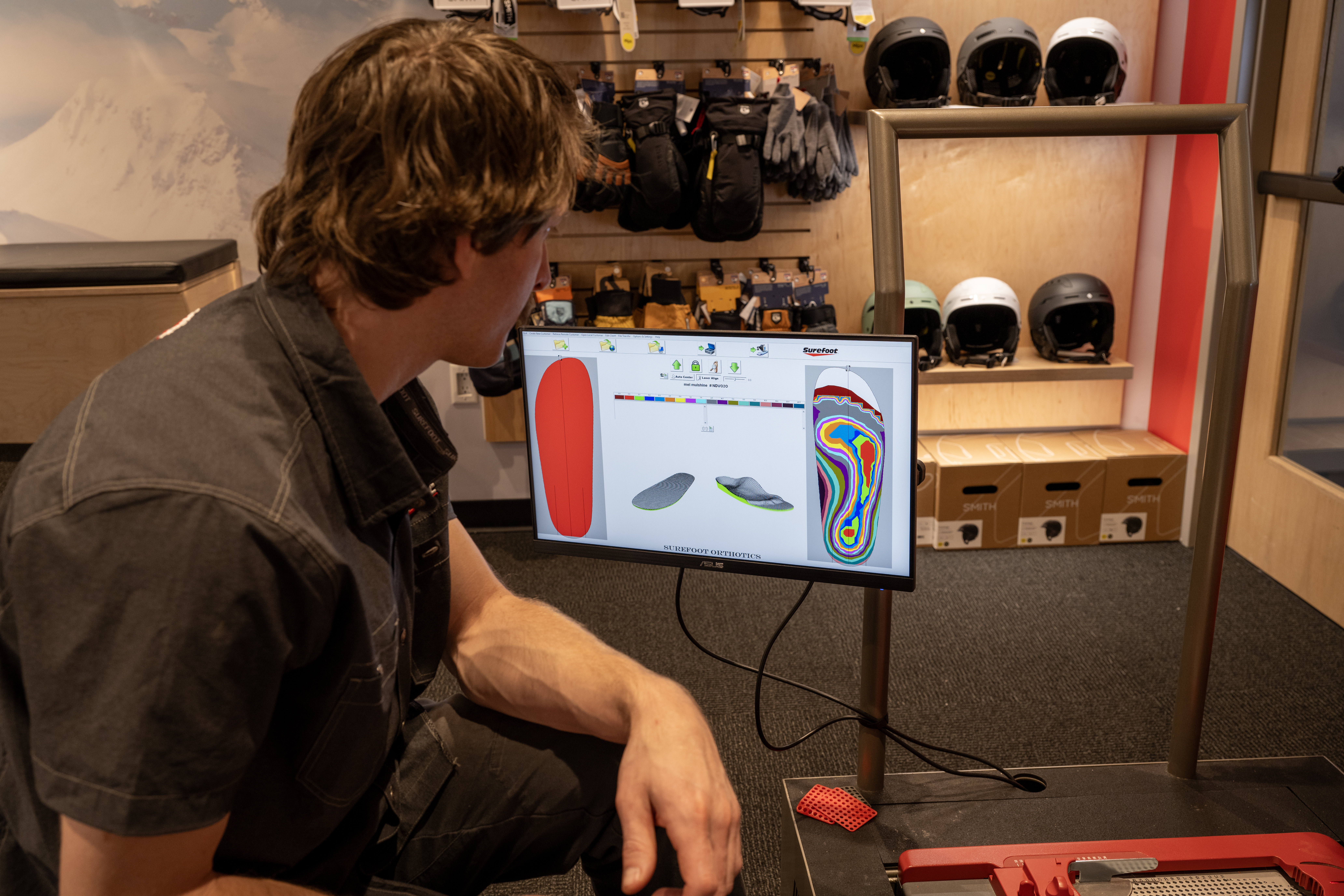
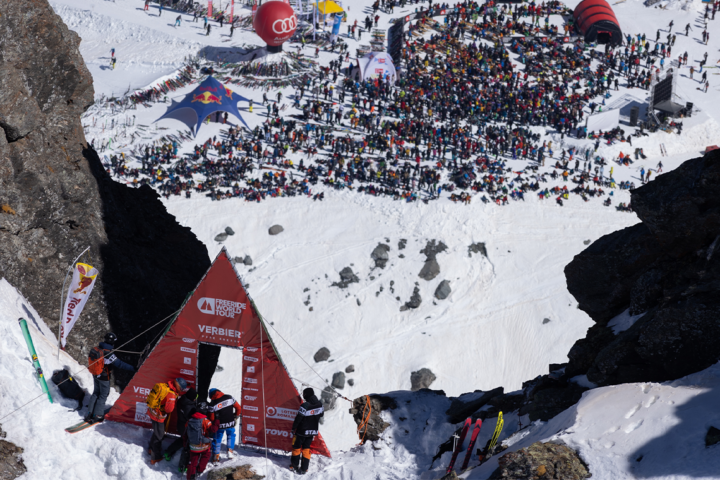


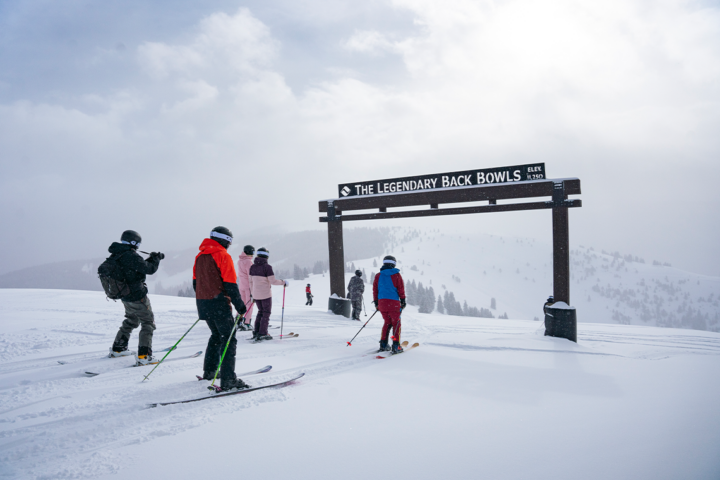
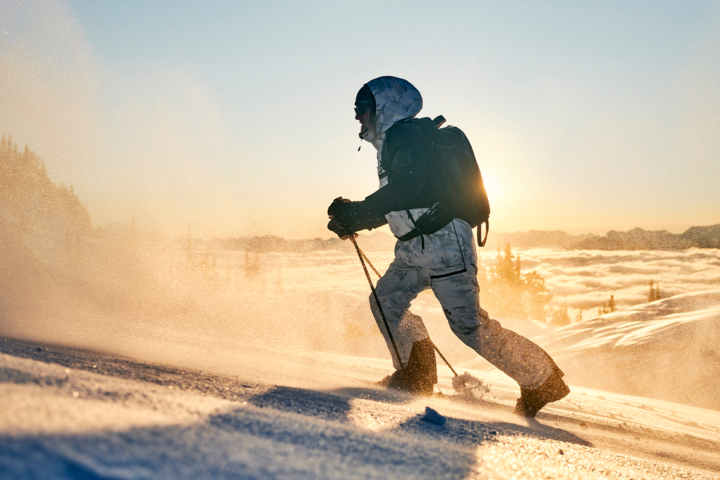

One thought on “FREESKIER’s guide to understanding and buying skis”
Comments are closed.